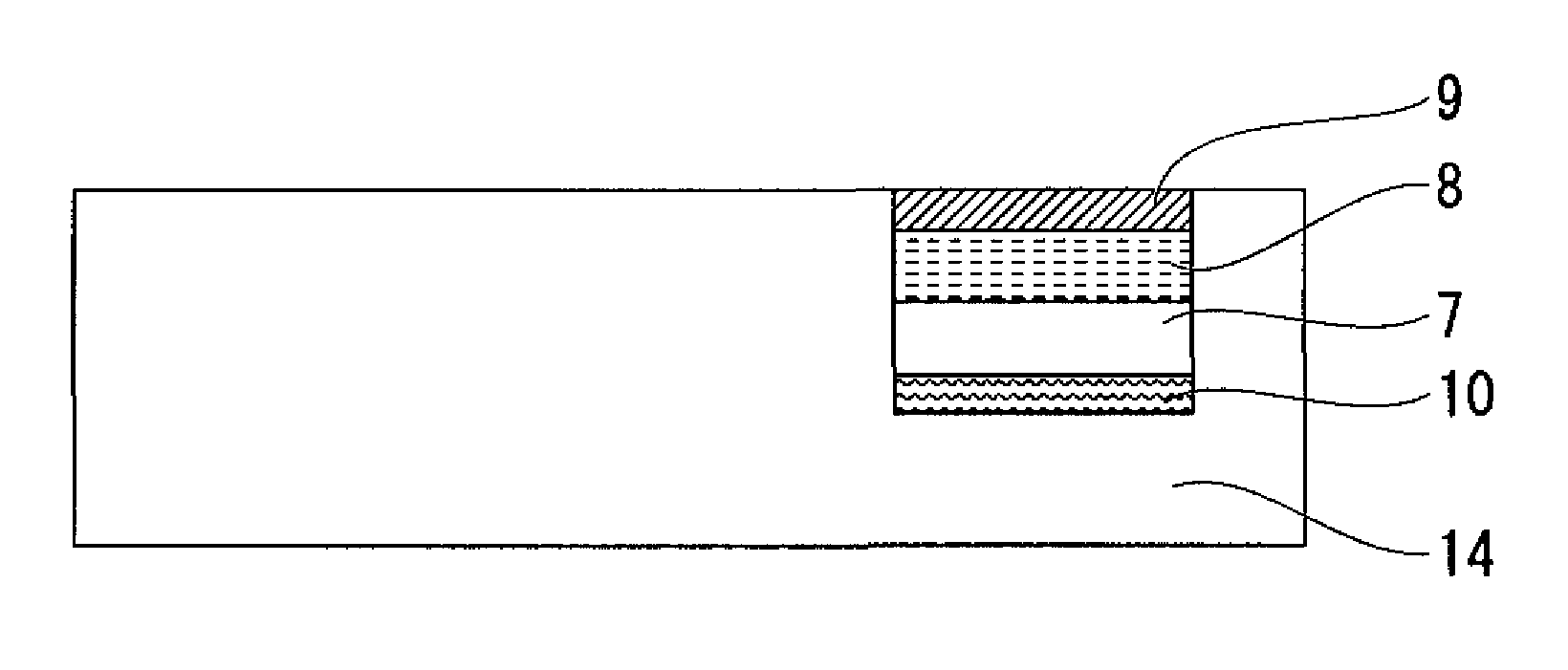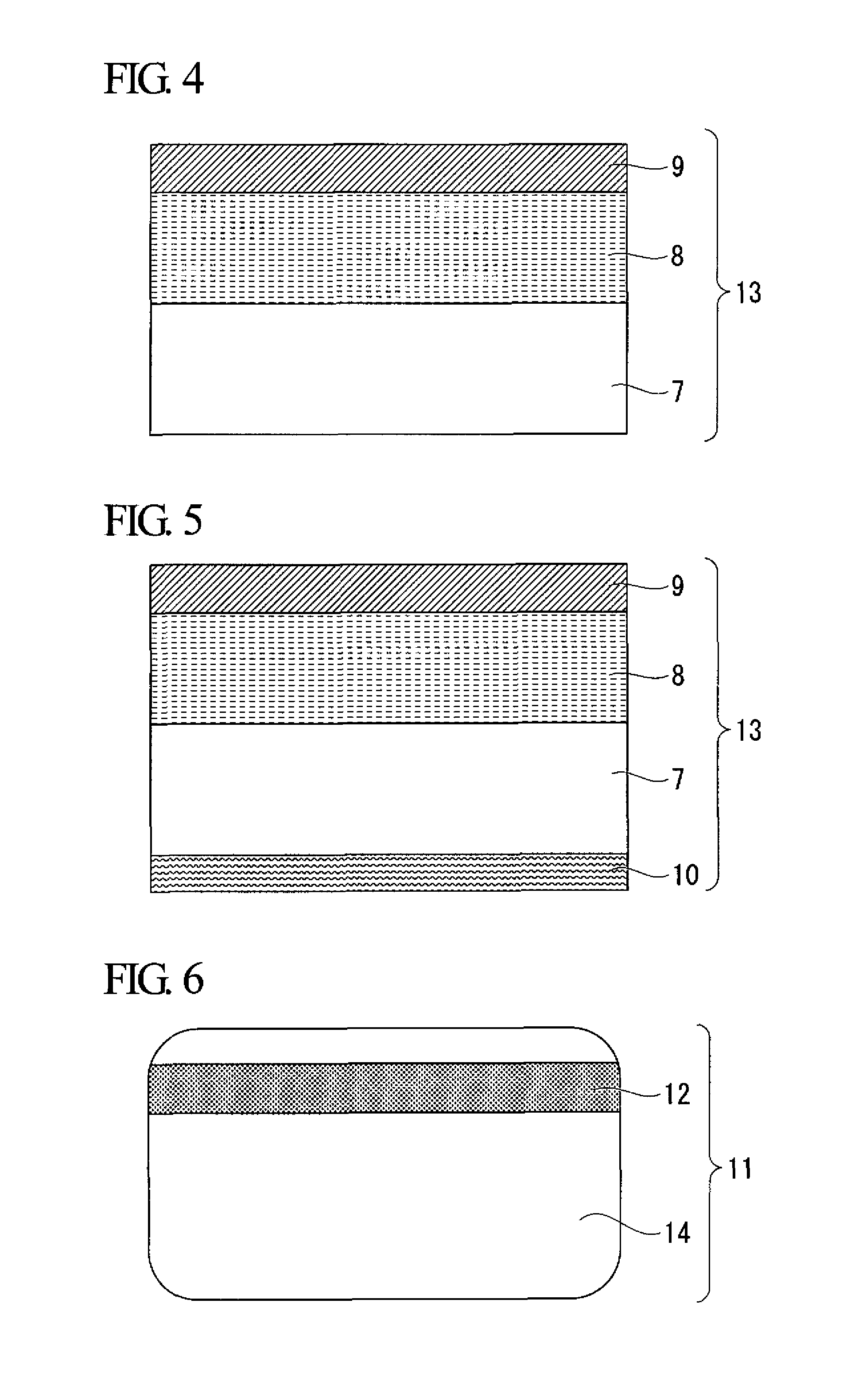Process for producing magnetic recording medium
a production process and magnetic recording technology, applied in the field of magnetic recording medium production process, can solve the problems of difficult to obtain preferable durability for practical use as magnetic recording medium, reduced surface lubricity of protective layer, soiling of pressing plate, etc., to achieve satisfactory seizure resistance, reduce the migration of wax components, and ensure the effect of durability
- Summary
- Abstract
- Description
- Claims
- Application Information
AI Technical Summary
Benefits of technology
Problems solved by technology
Method used
Image
Examples
example 1
[0126]The aforementioned protective layer coating (a) was coated onto a transfer support (24 μm thick, PET film) to a dry coated film thickness of 1.2 μm with a reverse coating type coating machine, and after drying in a nitrogen atmosphere, was subjected to heat curing treatment for 30 seconds at 105° C. in air to form a protective layer. The aforementioned magnetic recording layer coating was coated onto this protective layer to a dry coated film thickness of 8 μm with a reverse coating type coating machine, and after drying in a nitrogen atmosphere, was subjected to heat curing treatment for 30 seconds at 105° C. to form a magnetic recording layer. Moreover, the aforementioned adhesive layer coating was coated onto the magnetic recording layer to a dry coated film thickness of 1.5 μm with a reverse coating type coating machine followed by drying in a nitrogen atmosphere to form an adhesive layer and obtain a heat transfer laminate. This heat transfer laminate was cut to a prescri...
examples 2 to 4
[0127]Transfer-type recording tapes of Examples 2, 3 and 4 were produced in the same manner as Example 1 with the exception of using the protective layer coatings (b), (c) and (d) instead of the protective layer coating (a) used in Example 1.
example 5
[0200]The aforementioned magnetic recording layer coating was coated onto a resin support of a sticking label laminate (12 μm thick, PET film) to a dry coated film thickness of 8 μm with a reverse coating type coating machine, and after drying in a nitrogen atmosphere, was subjected to heat curing treatment for 30 seconds at 105° C. to form a magnetic recording layer. The aforementioned protective layer coating (m) was coated onto the magnetic recording layer to a dry coated film thickness of 2 μm with a reverse coating type coating machine, and after drying in a nitrogen atmosphere, was subjected to heat curing treatment for 30 seconds at 105° C. in air to form a protective layer. The aforementioned adhesive layer coating was coated on the side of the support, which is opposite to the side on which the magnetic recording layer and protective layer were formed, to a dry coated film thickness of 2 μm with a reverse coating type coating machine followed by drying in a nitrogen atmosph...
PUM
| Property | Measurement | Unit |
|---|---|---|
| volume average particle diameter | aaaaa | aaaaa |
| pressure | aaaaa | aaaaa |
| temperature | aaaaa | aaaaa |
Abstract
Description
Claims
Application Information
 Login to View More
Login to View More - R&D
- Intellectual Property
- Life Sciences
- Materials
- Tech Scout
- Unparalleled Data Quality
- Higher Quality Content
- 60% Fewer Hallucinations
Browse by: Latest US Patents, China's latest patents, Technical Efficacy Thesaurus, Application Domain, Technology Topic, Popular Technical Reports.
© 2025 PatSnap. All rights reserved.Legal|Privacy policy|Modern Slavery Act Transparency Statement|Sitemap|About US| Contact US: help@patsnap.com



